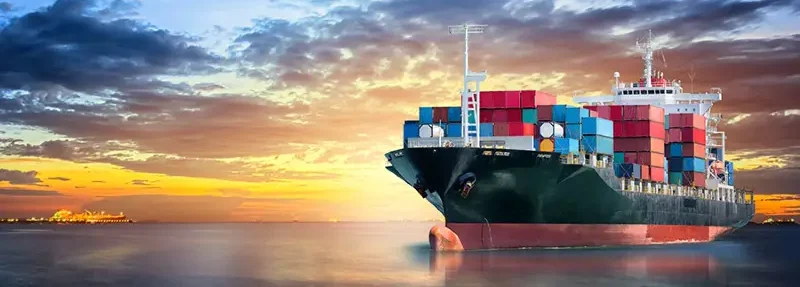Some consistency please — Exporter Magazine

Is New Zealand dropping the ball with its Double Tax Agreement network to help exporters and investors overseas? Greg James poses the question and some home truths.New Zealand currently has a network of 37 enforced Double Tax Agreements (DTAs), primarily with its main trading and investment partners. DTAs are viewed as beneficial by most countries as they:• Allow international business to be transacted with a degree of certainty.• Clarify the taxing rights for each country.• Avoid double taxation and prevent tax evasion by allowing countries to obtain information in other jurisdictions on taxpayers’ affairs.New Zealand’s DTA network is targeted to include countries where real benefits are likely to accrue (i.e. with our main trading partners). Benefits are likely to be limited if there are low levels of investment and trade between New Zealand and the other country.Tax practitioners and New Zealand businesses continue to debate whether the IRD and New Zealand Government are correctly focusing their efforts to ensure that New Zealand’s DTA network is sufficiently wide reaching and up to date – so as to help New Zealand exporters and companies that invest overseas.It is in New Zealand’s best interest to enter into DTAs and ensure that existing DTAs are renegotiated on a structured and timely basis. Renegotiated DTAs generally have lower withholding tax rates on cross border payments of dividends, interest and royalties.Lower rates of withholding tax:• Allow the repatriation of profits to New Zealand with less overseas tax being deducted, resulting in more funds being repatriated back to New Zealand investors / shareholders.• Reduce the possibility of New Zealand companies exporting or conducting business overseas being subject to tax in the overseas country.
Can do better?
Given the IRD’s limited resources, most people would probably agree that it is doing a satisfactory job with respect to New Zealand’s DTA network. However, with more Government funding, the IRD could do significantly better.Inland Revenue has a work programme to ensure that New Zealand continues to enter into new DTAs with appropriate partners and old DTAs are reviewed and renegotiated to ensure they provide appropriate benefits. The department is currently in the process of renegotiating DTAs with Japan and the Netherlands and entering into new DTAs with Luxemburg and Vietnam. Based on the IRD’s current resources they are at full capacity – more resources must be allocated.It has, however, become apparent that there is no cohesive strategy from Government on entering into and renegotiating DTAs and tying this process into other agreements (i.e. Free Trade Agreements negotiated by other departments).
DTAs and FTAs
One of the reasons for the disconnection between entering into FTAs and DTAs is that different Government departments are in charge of negotiating the respective agreements. Notwithstanding this, one would think it is not unreasonable to expect some degree of consistency and a coherent approach to be adopted by Government with respect to entering into FTAs and DTAs and for the process, when possible, to be linked.To follow are examples where this has not happened with respect to Asia (New Zealand’s current major trading focus).New Zealand’s DTA with China is becoming increasingly important due to the significant amount of trade between the two countries and the number of Kiwi companies setting up operations in China. New Zealand entered into a FTA with China in 2008, being the first country to do so. Since entering into the FTA exports to China have grown from NZ$2.3 billion to NZ$5.8 billion, a figure which substantially exceeded expectations for potential export growth prior to the agreement being signed. China is now New Zealand’s second largest trading partner after Australia, and ahead of the United States.However, New Zealand’s DTA with China was entered into in 1986. Given that China is one of New Zealand’s largest trading partners, it was surprising that at the time New Zealand was negotiating the FTA, a process was not commenced at the same time to renegotiate the DTA. We understand that New Zealand and China have only just started discussions in this respect. Based on past history it will take a number of years for any new DTA to become effective.Under the current New Zealand/China DTA, compared to recent DTAs that China has entered into or renegotiated, very high rates of withholding tax are payable. Under China’s more recent DTAs (or renegotiated DTAs), such as the one entered into last year with the United Kingdom, the withholding tax rate on dividends is five percent. This is just one of the DTAs China has recently entered into or renegotiated with a five percent withholding tax rate on dividends. With respect to New Zealand, under China domestic law the withholding tax rate on the payment of dividends is ten percent (i.e. there is no treaty reduction).
More inconsistencies
There also appear to be inconsistencies in strategy when New Zealand negotiated to become part of the ASEAN, Australia and New Zealand FTA. It was clearly recognised at the time that entering into this FTA would be beneficial to all parties involved. New Zealand has a number of important trading partners in the ASEAN region and this is one of the regions where exports and international business have been seen to, and are forecast to, grow significantly. Unfortunately, a number of the DTAs New Zealand has entered into with its ASEAN partners are out of date, for example; DTAs were entered into with the Philippines in 1980, Indonesia in 1988 and Thailand in 1998.
More planning
So, where to from here? Planning for entering into a DTA is essential as it can take a number of years to update or enter into new treaties. Strangely enough it is often a more difficult and time consuming process to renegotiate existing treaties than enter into a new one, as starting with a clean sheet of paper is easier than renegotiating existing terms. Also a variety of political issues can come into play, which are completely unrelated to the DTA process, and the treaty can be used asa pawn in a bigger political game.If New Zealand is going to continue to grow internationally, the Government should do all it can to assist exporters and reduce barriers for doing business overseas. It should have a clear strategy going forward on how to achieve this – to help New Zealand businesses compete on a level playing field with our large international competitors. This includessour DTA network. The Government should be applauded in being the first country to enter into a FTA with China; however, the ball is being dropped with respect to a consistent approach in enterin renegotiating DTAs as part of New Zealand’s wider network of international agreements.Greg James is principal tax consulting at WHK and has eight years experience providing tax advice in the United States and Asia.
Email greg.james@whk.co.nz
Publishing Information
Magazine Issue
Exporter Magazine Nov/Dec 2012 Issue 26






